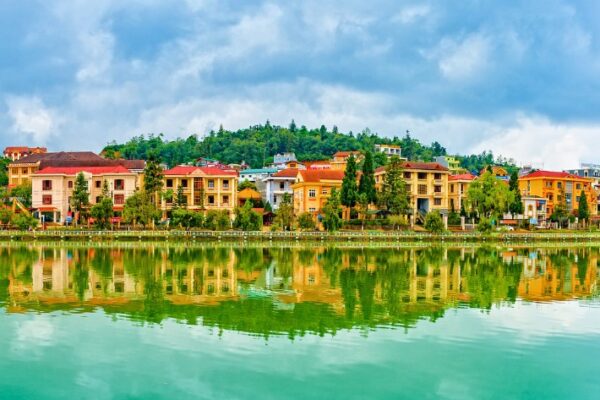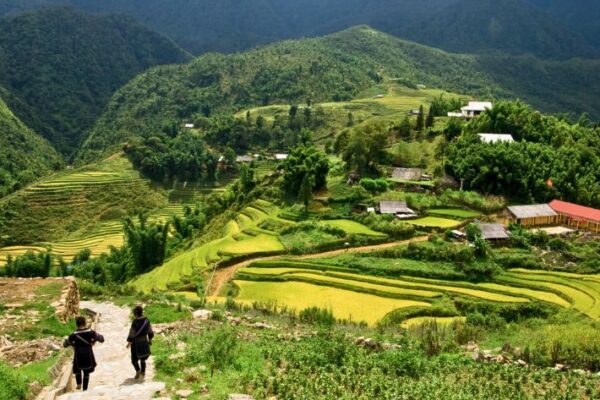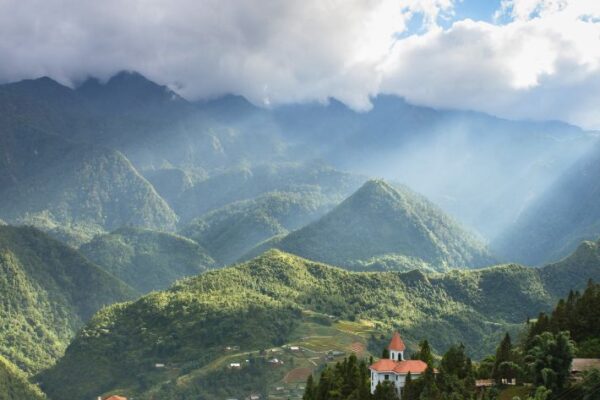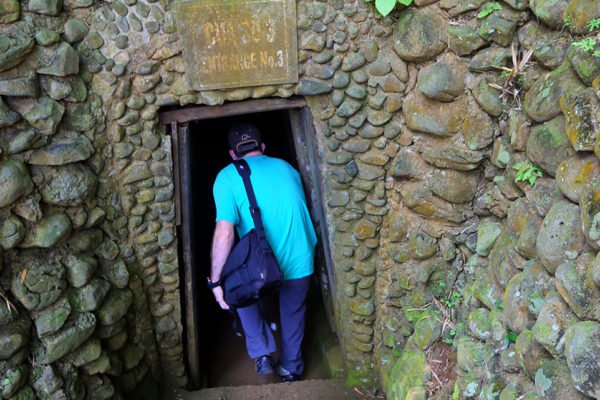Best Sapa Trekking Routes That Will Show You The Charm of This Land

Northern Vietnam offers incredible adventures, including some of the best trekking experiences in Sapa. Renowned for its terraced rice fields, ethnic minority villages, and stunning mountain views, Sapa is a trekker’s paradise. The diverse trekking routes in this region provide an immersive way to explore its natural beauty and cultural heritage. From challenging mountain trails to leisurely village walks, Sapa trekking routes cater to all levels of hikers and promise unforgettable journeys through some of Vietnam’s most enchanting landscapes.
Why Go Trekking in Sapa?
- Stunning landscapes
Sapa is famous for its breathtaking terraced rice fields, lush valleys, and towering mountains. Trekking through these landscapes offers unparalleled views and photo opportunities.
- Cultural experiences
The region is home to several ethnic minority groups, including the Hmong, Dao, and Tay. Trekking routes often pass through their villages, providing a unique chance to learn about their traditional ways of life, customs, and crafts.
- Variety of trails
Sapa offers a wide range of trekking routes suitable for all levels, from beginners to experienced hikers. Whether you prefer short, leisurely walks or challenging multi-day treks, there’s something for everyone.
- Biodiversity
The region boasts rich biodiversity, including unique flora and fauna. Trekkers can explore the Hoang Lien Son mountain range and Sapa’s national parks, where they might encounter rare plant species and wildlife.
- Community-based tourism
Many trekking tours in Sapa are organized in partnership with local communities. This not only provides a more authentic experience for visitors but also supports the local economy and promotes sustainable tourism.

Sapa with breathtaking sceneries and ethnic people
Timing Your Visit to Sapa
Sapa experiences a temperate climate with four distinct seasons, each offering unique trekking conditions:
- Spring (March to May): This season features mild temperatures ranging from 15°C to 25°C. The landscape is vibrant with blooming flowers, making it an ideal time for trekking.
- Summer (June to August): Summer brings warmer temperatures (20°C to 30°C) and occasional heavy rains, leading to lush green rice terraces. While the scenery is stunning, the rain can make trails slippery and challenging.
- Autumn (September to November): With temperatures between 15°C and 25°C, autumn is one of the best times to visit Sapa. The weather is dry, and the rice terraces turn golden, providing spectacular views.
- Winter (December to February): Winter temperatures can drop to as low as 0°C, and the area can experience frost and occasional snowfall. While it’s less ideal for trekking, the winter landscape has its own charm.
The best time to trek in Sapa is during spring (March to May) and autumn (September to November). These seasons offer mild, dry weather conditions and stunning natural scenery, ensuring an enjoyable and comfortable trekking experience.
Preparations for Your Trek
Trek Duration
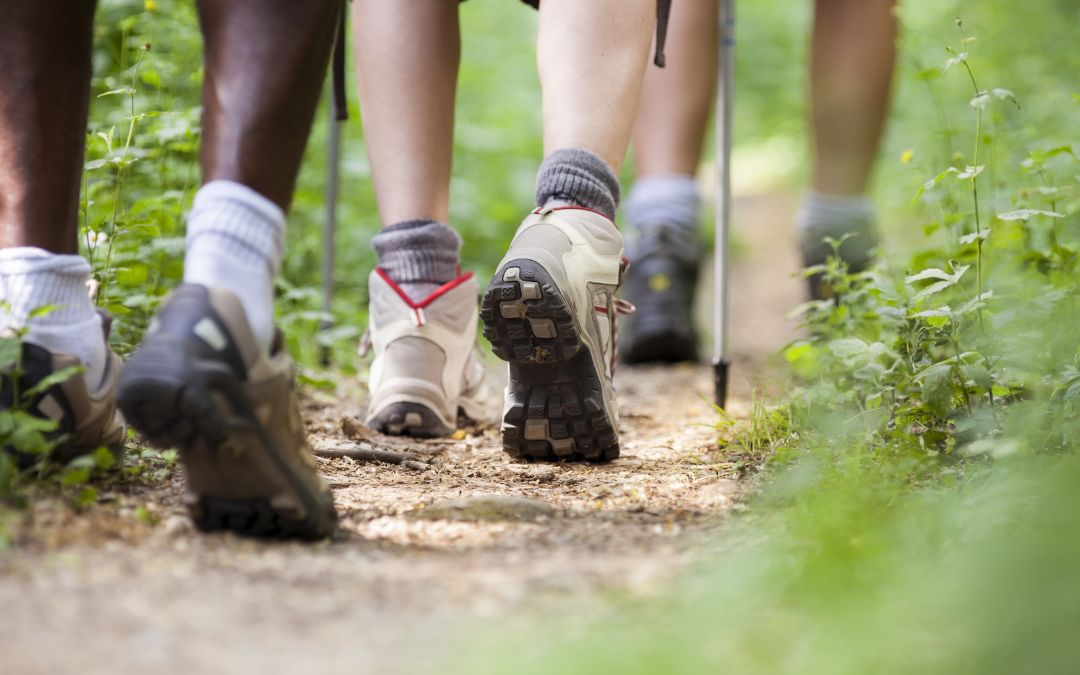
Adapt the trekking time to your schedule
The duration of your trek in Sapa can be tailored to fit your schedule and interests:
- Full-day trek: For those with limited time, a full-day trek offers a comprehensive glimpse into Sapa’s highlights. You’ll visit key spots and experience the region’s beauty without needing an overnight stay.
- 2-3 day trek: To fully immerse yourself in Sapa’s natural splendor and local culture, consider spending 2-3 days trekking. This allows you to explore more remote areas and stay overnight in ethnic village homestays. Staying with local families provides a unique opportunity to interact with the villagers, learn about their daily lives, and gain a deeper understanding of their traditions and customs.
Trekking Levels
Sapa offers three trekking levels suitable for all travelers:
- Easy: Ideal for beginners or those with limited time, easy treks typically lead to nearby ethnic villages. These routes offer a brief but insightful look into local culture and can be completed within half a day to a full day.
- Medium: Medium treks are longer and venture off the beaten path, reaching areas not easily accessible by vehicle. These routes provide a more in-depth exploration of Sapa’s scenic landscapes and cultural sites, making them perfect for those with moderate hiking experience.
- Difficult: The most challenging option is the trek to Fansipan Peak, known as the “Roof of Indochina.” This trek is only for experienced hikers due to its demanding nature, requiring specific skills and physical fitness. The trek typically takes about three days, depending on the chosen trail. It is advisable to hire a local guide or porter to navigate the complex terrain safely and avoid getting lost.
Packing Checklist

Necessary things for your trekking journey
To ensure a safe and enjoyable trekking experience, here’s a packing checklist:
- Clothing: Lightweight, breathable layers for warm weather, warm clothing for cooler nights and higher altitudes, and a waterproof jacket and pants for rainy conditions.
- Footwear: Sturdy, comfortable hiking boots with good grip. Extra socks to keep feet dry.
- Backpack: A durable, comfortable backpack to carry essentials.
- Water and snacks: Plenty of water and high-energy snacks to stay hydrated and fueled.
- Navigation tools: Maps, GPS, or a reliable trekking app.
- First aid kit: This kit includes basic first aid supplies, such as bandages, antiseptic wipes, pain relievers, and personal medications.
- Sun protection: Sunscreen, sunglasses, and a hat.
- Insect repellent: To protect against bugs and insects.
- Camera: To capture the stunning landscapes and memorable moments.
- Cash: Small amounts of local currency for purchases in remote villages.
>> Read More: Accommodation in Sapa: Guide for Selection & Our Picks for Stays
Wonderful Sites on Sapa Treks
Exploring Sapa through its trekking routes offers a chance to witness some of the most beautiful and culturally rich sites in Vietnam.
Cat Cat Village
Located just a few kilometers from Sapa Town, Cat Cat Village is home to the Black Hmong people.
This village is known for its traditional crafts, including weaving and metalworking. Visitors can enjoy the picturesque waterfall, terraced fields, and the opportunity to observe and engage in local cultural practices.
Lao Chai and Ta Van Villages
These villages are situated in the Muong Hoa Valley and are predominantly inhabited by the Black Hmong and Giay ethnic groups.
Trekking to Lao Chai and Ta Van provides stunning views of terraced rice fields and the surrounding mountains. Staying in a homestay here allows for an immersive cultural experience and a chance to learn about the daily lives of the villagers.
Y Linh Ho Village
Y Linh Ho is another Black Hmong village located along the Muong Hoa River.
The trek to this village is relatively challenging, involving steep paths and rugged terrain. However, the breathtaking views of the valley and the opportunity to see traditional Hmong homes make it worth the effort.
Fansipan Mountain
Known as the “Roof of Indochina,” Fansipan Mountain is the highest peak in Vietnam, standing at 3,143 meters.
The trek to the summit is difficult and typically takes about three days, but it rewards hikers with spectacular panoramic views of the surrounding mountains and valleys. For those less inclined to hike, there is also a cable car that provides a quicker route to the top.
Muong Hoa Valley
This valley is famous for its breathtaking scenery and ancient rock engravings.
The Muong Hoa River winds through the valley, bordered by terraced rice fields and traditional villages. Trekking through this valley offers a serene and scenic experience, with plenty of opportunities for photography and cultural exploration.
Silver Waterfall (Thac Bac)
Located about 12 kilometers from Sapa Town, Silver Waterfall is a stunning natural attraction.
The 200-meter-high waterfall cascades down, creating a mesmerizing sight. It’s a popular stop on many trekking routes and provides a refreshing break during the trek.
Heaven’s Gate
Heaven’s Gate is a mountain pass that offers one of the highest viewpoints in Sapa.
From here, you can see the winding roads leading to Lai Chau and the majestic Fansipan Mountain in the distance. The panoramic views from Heaven’s Gate are truly awe-inspiring and make for an unforgettable trekking experience.
Sin Chai Village
Situated at the foot of Fansipan Mountain, Sin Chai is a Red Dao village.
The trek to Sin Chai is known for its challenging terrain but offers a glimpse into the life of the Red Dao people, who are known for their herbal bath treatments and traditional clothing.
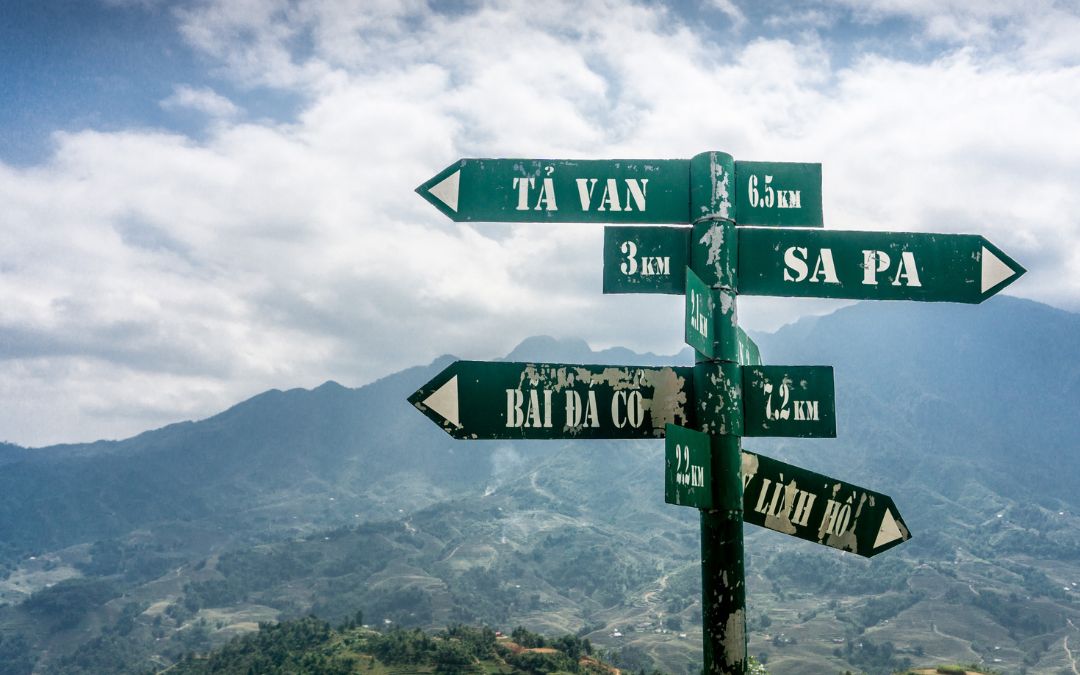
Multiple places in Sapa for trekking
5 Best Sapa Trekking Routes
Sapa offers numerous trekking opportunities with its breathtaking landscapes and rich cultural heritage.
Fansipan Trek
- Level: Difficult
Fansipan, the tallest mountain in Indochina at over 3,000 meters above sea level, offers a challenging but rewarding trek.
Pickup is organized from Sapa town or Lao Cai train station, and tours usually start from Cat Cat village. The three-day route begins with a gentle walk through a Hmong village before delving into thick bamboo forests. After about 6-7 hours of hiking, the first day ends at a campsite or homestay at around 2,300 meters.
The second day involves a hard trek at altitudes of 2,500 meters, taking about 8 hours to reach the next base camp.
On the third day, trekkers wake up early to complete the ascent to over 3,100 meters, enjoying breathtaking vistas of jagged mountains. After a brief but necessary celebration at the summit, the descent begins, concluding at the Tram Ton ranger station, where mini-buses are ready to take you back to Sapa.
Lao Chai and Ta Van Trek
- Level: Moderate
Starting on a mountain road that leads out of Sapa, this trek descends into a deep valley, crosses the Ta Van River, and winds through rice paddies and the spread-out homes of Lao Chai and Ta Van villages.
The trail eventually crosses back over the river and rejoins the road, where most hikers then hire a jeep or motorcycle for the return ride to Sapa. This route offers a blend of stunning natural scenery and cultural immersion, taking you through the heart of the Muong Hoa Valley.
Cat Cat Village Trek
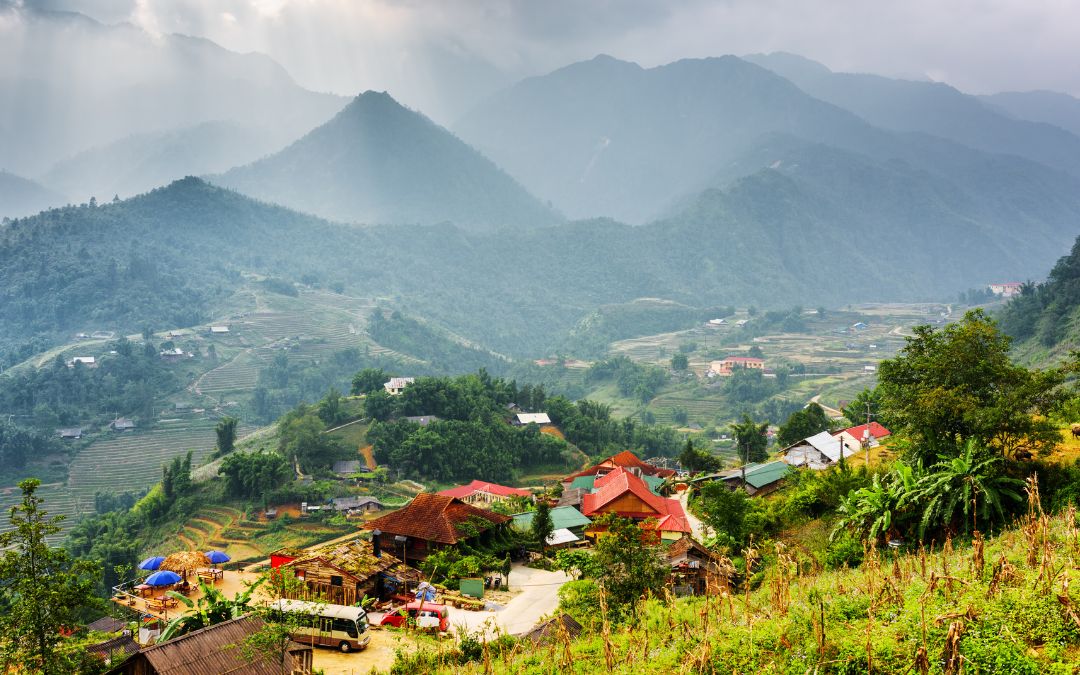
Cat Cat Village view
- Level: Easy
Trekkers will begin their journey at the well-known Cat Cat Hotel and then proceed to pass the fortress-like headquarters of Hoang Lien National Park.
Afterwards, the trail will lead down a staircase to Cat Cat Falls. Upon crossing the river using a plank-floored suspension bridge, the trail will steeply climb the other side of the valley before descending to cross the river once again using another narrow suspension bridge.
At this point, you can walk back to Sapa or hire one of the waiting motorcycle drivers for a high-speed ride up the twisting mountain roads.
Ta Phin Trek
- Level: Easy – Moderate
This trek begins with a jeep or motorcycle ride down the main road to Lao Cai, turning left onto a side road to Ta Phin. If you’re driving your own motorcycle, note that this turnoff is not marked, but you’ll know you’re on the right path when you pass the haunted-looking ruins of a burnt-out French seminary.
There are multiple trekking routes within Ta Phin Valley, though most follow the main trail through a Hmong village and up to the Ta Phin caves. This route combines a scenic ride with a culturally rich hike, offering insights into Hmong traditions and the chance to explore unique cave systems.
Sapa Valley Trail
- Level: Easy – Moderate
For a beautiful day trek through surrounding rice paddies, the Sapa Valley Trail is ideal.
The trek starts in Sapa Town or at the trailhead near Vong Canh Hill. The route follows a paved road through a stunning mountain valley, crossing a small waterfall along the way.
After about 4 kilometers, the trail reaches the road; from here, turn left and follow the route back to Sapa, covering a total distance of approximately 8.5 kilometers. You can take a taxi back from the main road if you prefer.
This route is fairly easy and suitable for people with a moderate level of fitness. It offers a scenic and leisurely trek.
>> Read More: Hiking In Sapa – Best Time, Planning, Treks and Trails
Craft Your Sapa Trekking Routes With APT
Sapa, with its captivating scenery, vibrant cultures, and challenging yet rewarding treks, is a true gem in Vietnam’s northern highlands. Whether you opt for the classic Muong Hoa Valley trek, the breathtaking Fansipan ascent, or the serene Silver Waterfall route, each trail offers a unique window into the region’s natural splendor and ethnic diversity.
To ensure your Sapa trekking routes are tailored to your preferences and executed with the utmost care, do not hesitate to reach out to Asia Pioneer Travel, a top-tier tour agency specializing in crafting unforgettable journeys throughout Vietnam and the surrounding region. With extensive local knowledge, attention to detail, and commitment to sustainable tourism practices, our committed travel designers will elevate your Sapa adventure to new heights.
Let us guide you on an unforgettable trek through the captivating landscapes of Sapa, where the true essence of this remarkable land will leave an indelible mark on your heart and soul.
